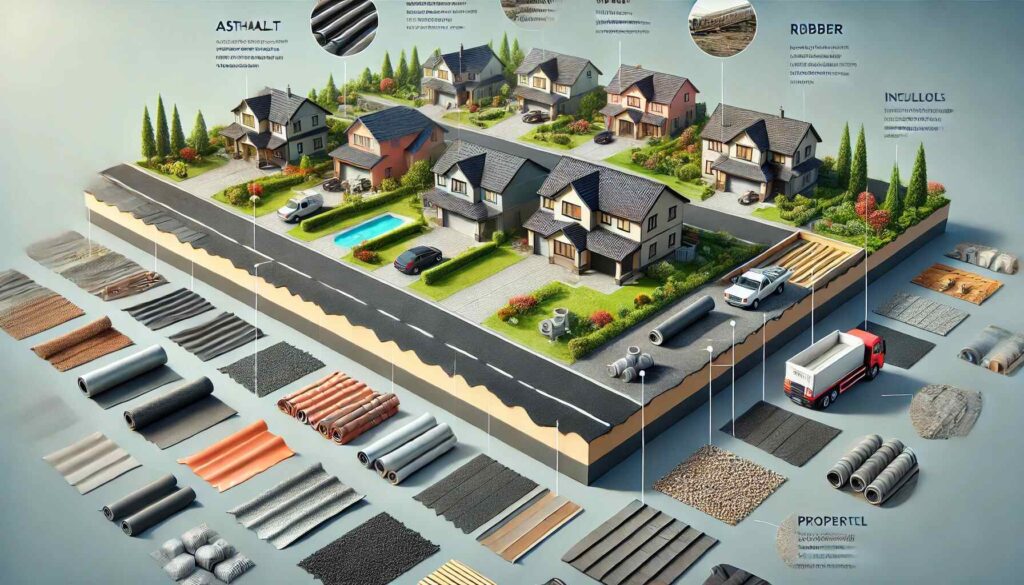When it comes to selecting roofing materials and techniques, the array of options can seem overwhelming. However, making an informed decision is crucial as the roof is a vital component of your home’s structure and aesthetic. This guide will walk you through the best materials and techniques to ensure your roof not only looks great but also offers lasting protection.
Understanding Roofing Materials
Asphalt Shingles
Asphalt shingles are the most popular roofing material in North America. They are affordable, durable, and come in various styles and colors. Asphalt shingles are relatively easy to install, making them a favorite among DIY enthusiasts. They typically last between 20 to 30 years, depending on the quality and climate conditions.
Metal Roofing
Metal roofs are gaining popularity due to their longevity and energy efficiency. Made from materials like steel, aluminum, and copper, metal roofs can last 50 years or more. They reflect solar radiant heat, which can reduce cooling costs in hot climates. Additionally, metal roofing is lightweight and resistant to extreme weather conditions.
Wood Shingles and Shakes
Wood shingles and shakes provide a natural and rustic look to homes. Commonly made from cedar, redwood, or pine, these materials are durable and offer good insulation. Wood shingles are machine-cut and offer a uniform appearance, while shakes are hand-split for a more rugged look. With proper maintenance, wood roofs can last up to 30 years.
Clay and Concrete Tiles
Clay and concrete tiles are known for their durability and distinctive appearance. These heavy materials can withstand extreme weather conditions, including high winds and hail. Clay tiles offer a traditional Spanish or Mediterranean look, while concrete tiles can mimic the appearance of wood or slate. These tiles can last 50 years or more but require a strong roofing structure to support their weight.
Slate Roofing
Slate is one of the most durable roofing materials available, with a lifespan of 75 to 100 years. It offers a timeless and elegant appearance, making it a premium choice for high-end homes. Slate roofing is fire-resistant and environmentally friendly, but it is also one of the most expensive options and requires specialized installation.
Roofing Techniques
Proper Installation
No matter the material, proper installation is key to a long-lasting roof. Hiring experienced and certified roofing contractors ensures that your roof is installed correctly, minimizing the risk of leaks and other issues. Proper installation includes adequate ventilation, which prevents moisture buildup and extends the roof’s lifespan.
Regular Maintenance
Regular maintenance is essential for all roofing types. This includes inspecting for damage, cleaning gutters, and removing debris. Addressing minor issues promptly can prevent costly repairs down the line.
Choosing the Right Underlayment
The underlayment, placed beneath the roofing material, acts as an additional barrier against water infiltration. There are various types of underlayment, including asphalt-saturated felt, rubberized asphalt, and synthetic materials. The choice of underlayment depends on the primary roofing material and local weather conditions.
Incorporating Energy-Efficient Solutions
Energy-efficient roofing solutions, such as cool roofs, reflect more sunlight and absorb less heat. This can reduce energy bills and improve indoor comfort. Materials like metal and certain asphalt shingles can be coated with reflective coatings to enhance their energy efficiency.
Conclusion
Choosing the right roofing materials and techniques involves considering several factors, including your budget, aesthetic preferences, and the local climate. Asphalt shingles offer affordability and ease of installation, while metal roofs provide longevity and energy efficiency. Wood shingles, clay tiles, and slate offer unique looks and exceptional durability. Regardless of the material, proper installation and maintenance are crucial to ensure your roof protects your home for many years to come.
By understanding the benefits and drawbacks of each option, you can make an informed decision that enhances both the appearance and functionality of your home.

